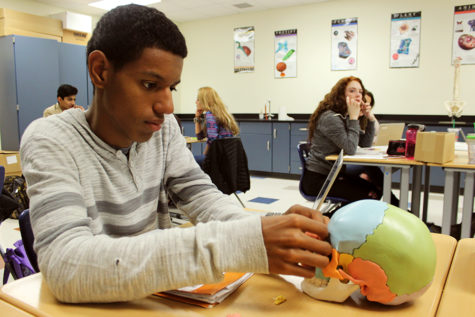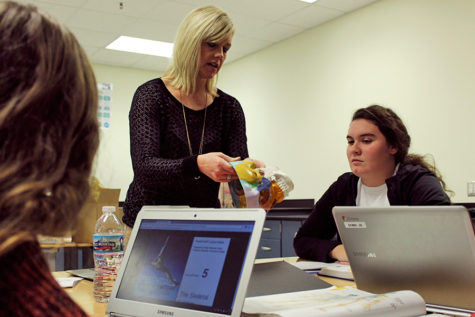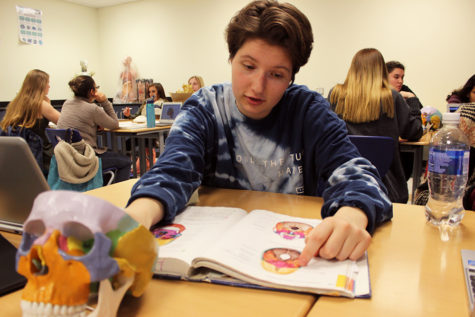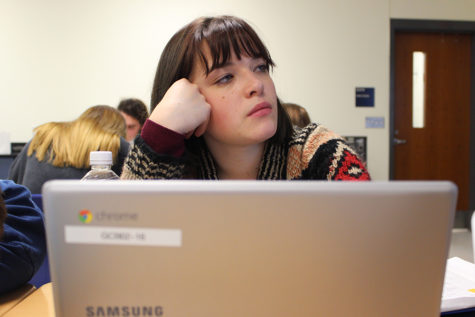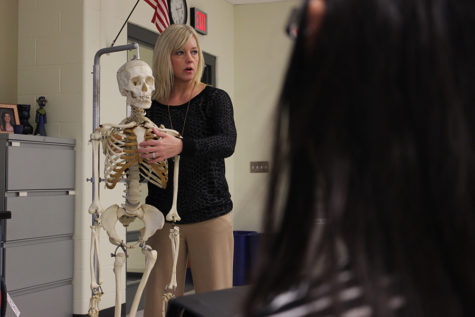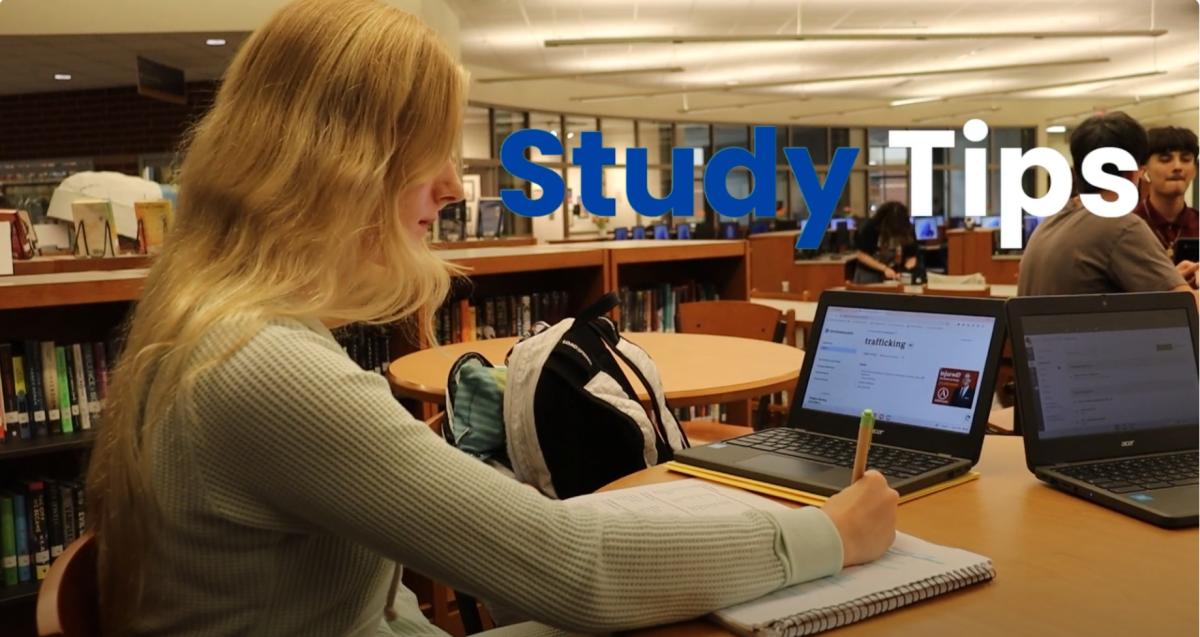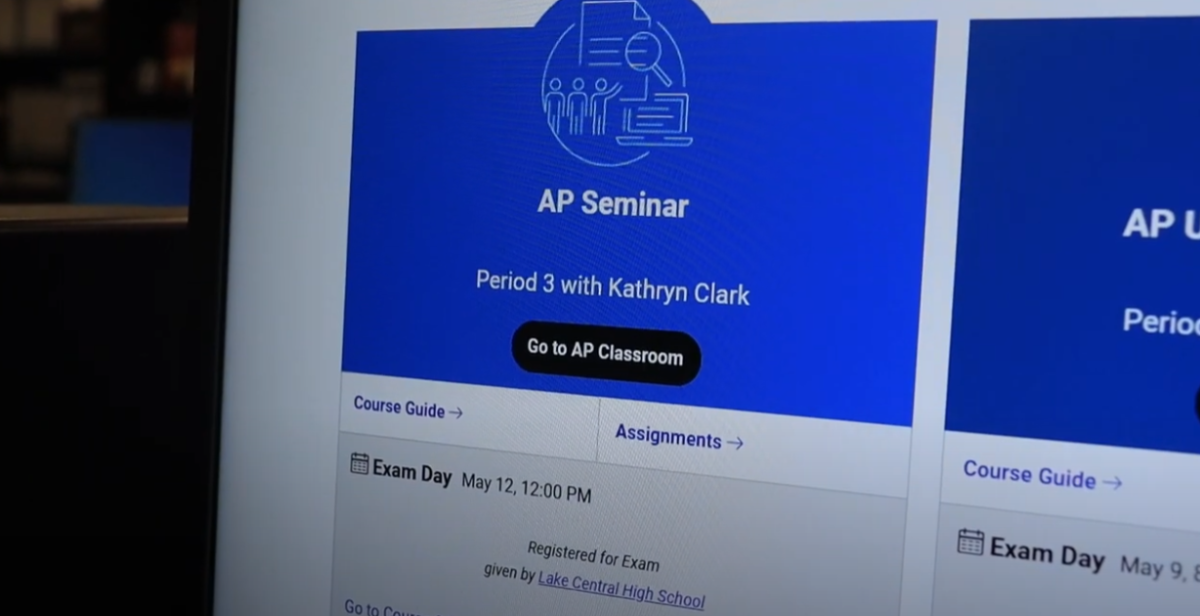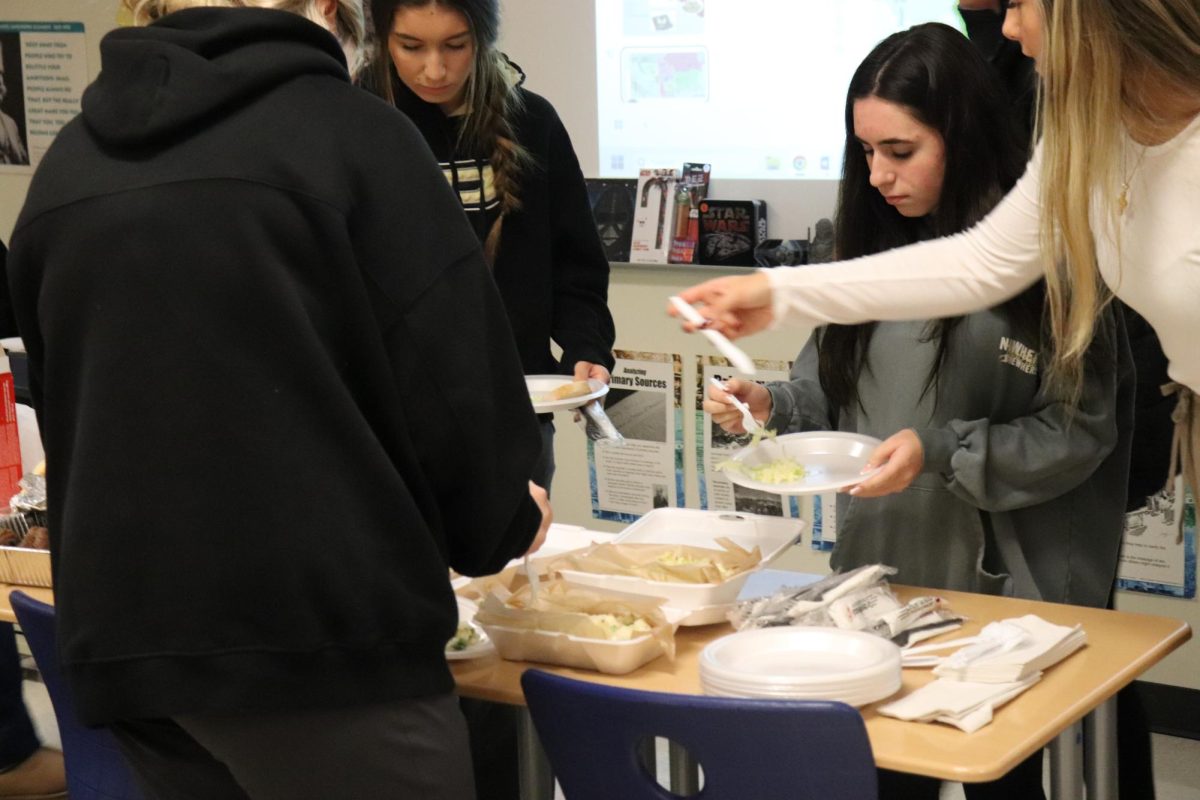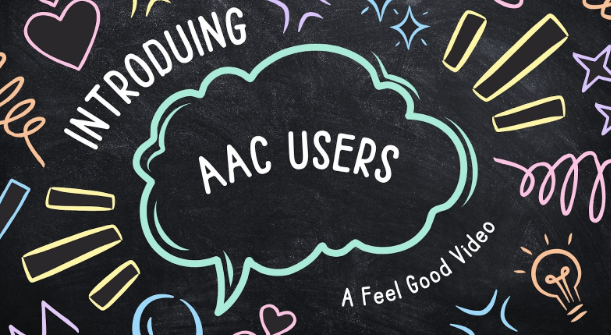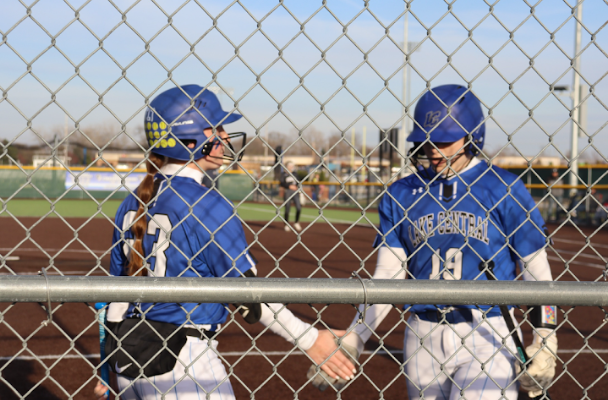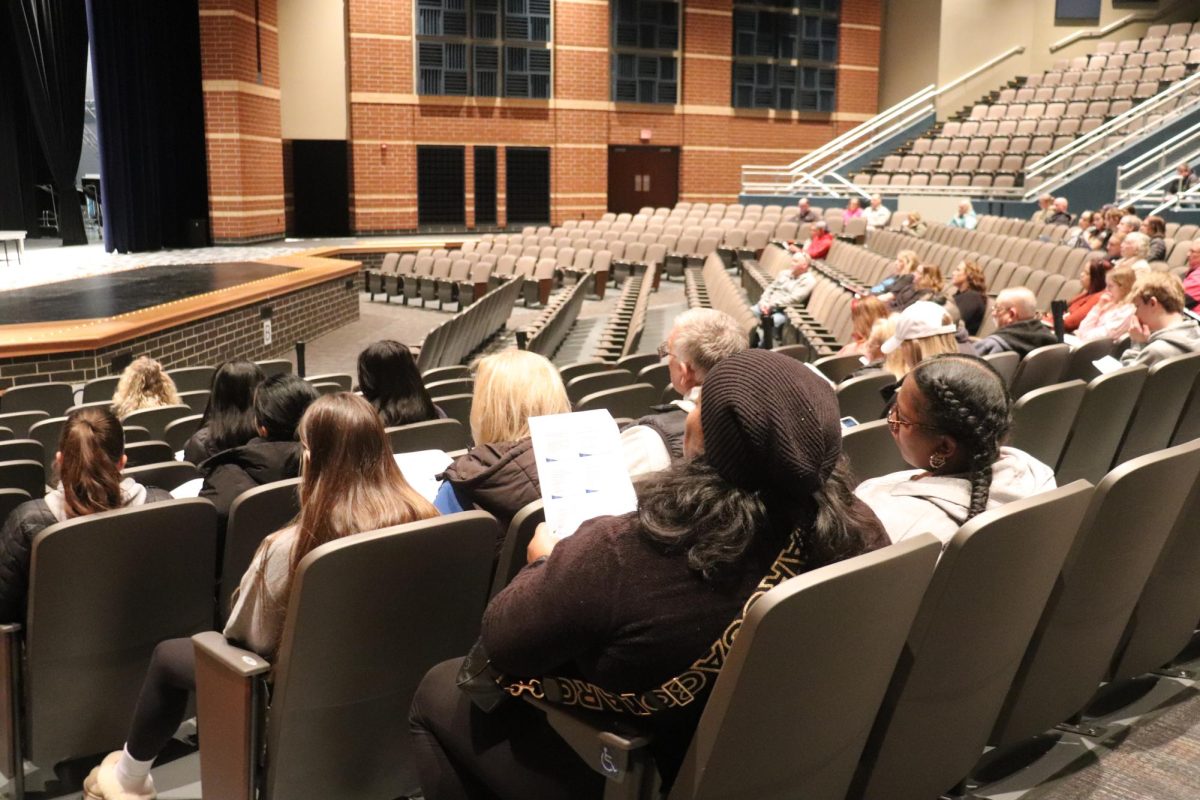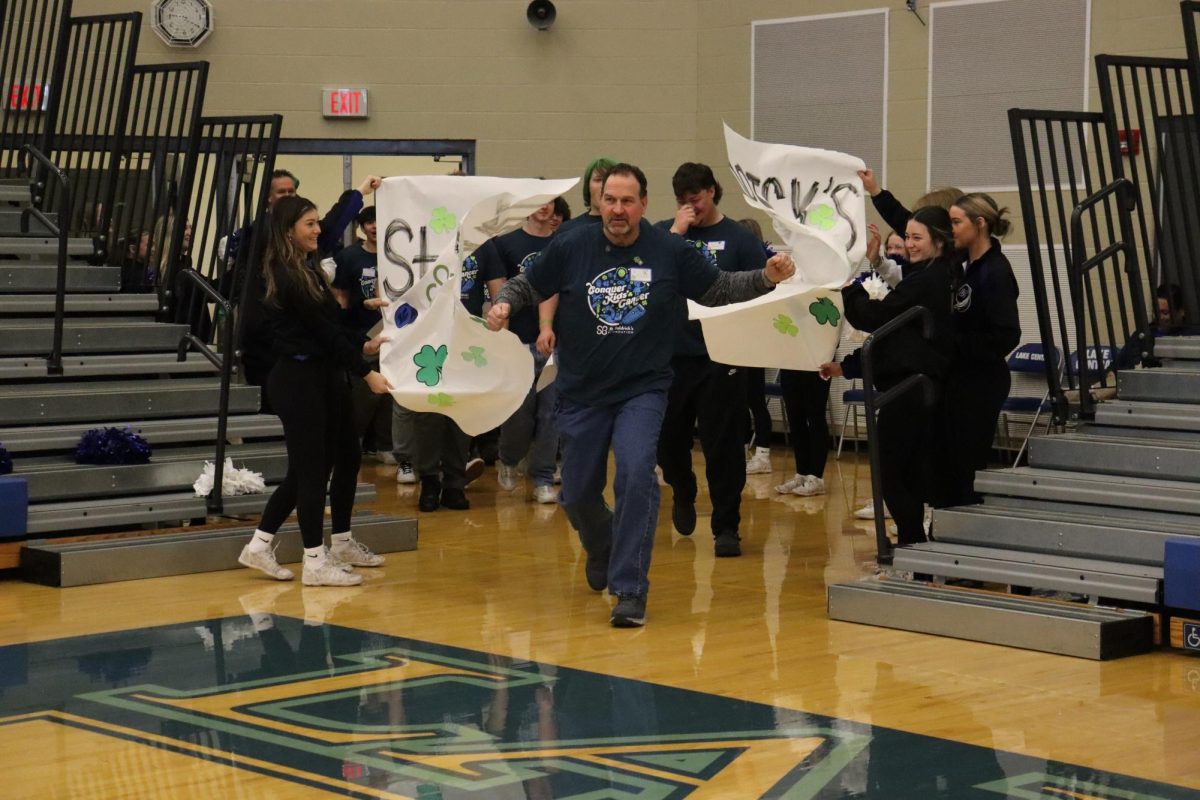On Tuesday, Nov. 15, Mrs. Stephanie Parks, Science, taught her Anatomy and Physiology class about the skeletal system, using models to teach students through visual learning.
“Today in Anatomy, we were learning the axial skeleton, which is the longitudinal axis, the cranium [and] the facial bones. We pointed out some specific features that I would like students to know and understand. Then, we talked about the vertebral column, which is made of the cervical spine, thoracic spine and lumbar spine. We talked about natural and abnormal curvatures. We also discussed the bony thorax, the rib cage to protect the heart and lungs. Then, we showed the articulation points in the thoracic spine and where the ribs would articulate with the sternum. We also went over the three different regions of the sternum,” Mrs. Parks said.
Talking about breaking her own tailbone and its effects, Mrs. Parks tried making the lesson go beyond the book by telling of first-hand experience and displaying models.
“I think it’s important to touch, feel, locate and quiz each other with the models. That way you get a hands-on experience. We have some models you can take apart and put back together like a puzzle. It’s important to touch and feel and see a skeleton to show relationships from one bone to another, so they can imagine where the soft structures can be,” Mrs. Parks said.
Some students like Madelyn Nohos (12) believed the models were beneficial to learning.
“I really enjoyed this lesson in Anatomy. The models helped me discover some bones in my body that I didn’t already know because I can’t feel them on myself,” Nohos said.
